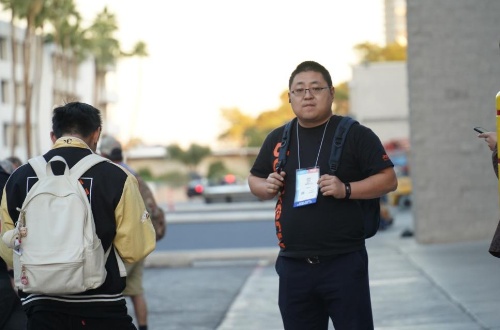12-19
Hong Kong Film Industry In 110 Years – Evolution And Rebirth
 2023-03-28
2023-03-28
On April 1st, 20 years ago, Leslie Cheung bid his final farewell to this world. Though he is no longer with us, his influence endures. While many of us still miss him dearly, we also look back fondly on the golden age of Hong Kong cinema that he embodied.
From the 1980s to the 1990s, Hong Kong cinema enjoyed a global reach, releasing over 200 films annually and providing work for more than 20,000 professionals in the industry. Not only did Hong Kong films outperform Hollywood productions in local box offices, but they also influenced Western cinema. Numerous American directors paid homage to Hong Kong cinema, seeking to imitate its style and techniques. It was during this era that Hong Kong earned the monikers “Hollywood of the East” and the “Star Factory” of Chinese cinema. Leslie Cheung, who collaborated with esteemed directors like Siu-Tung Ching, Wong Kar-wai, John Woo, and Chen Kaige, created cinematic masterpieces such as “A Chinese Ghost Story” (《倩女幽魂》), “Days of Being Wild” (《阿飞正传》), “A Better Tomorrow” (《英雄本色》), and “Farewell My Concubine” (《霸王别姬》). Through his magnetic performances, Cheung brought the allure of the East to the world stage and cemented his place in the annals of cinematic history.
Over the course of its 110-year history, the Hong Kong film industry has undergone significant changes and developed its own unique aesthetic style. While it is primarily known for its entertainment value, Hong Kong cinema has always been intimately connected to Chinese traditional culture in multiple dimensions. Its artistry draws inspiration from diverse sources, such as poetry, paintings, operas, and folk music. Consider Wong Kar-wai’s films, for example. “In the Mood for Love” (《花样年华》) constructed a nostalgic and spiritual atmosphere through its use of colors and composition. Conversely, “Ashes of Time”(《东邪西毒》) features a yellowish tone that evokes a sense of gloom and melancholy, presenting a vivid artistic sensibility and bold outlines that resemble Chinese paintings. Such works offer audiences the opportunity to develop indescribable emotions. Hong Kong musicians, led by James Wong, have also contributed to the unique sound of Hong Kong cinema. Their soundtracks are creative, popular, and classic, as exemplified by works like “A Sound of Laughter in the Vast Sea” (《沧海一声笑》) and “A Man Should Stand Strong” (《男儿当自强》). Hong Kong cinema has also made significant contributions to the Wuxia genre, giving rise to numerous folk music classics.
These films showcased pluralism, tolerance, dignity, and apoliticism, reflecting the rich cultural diversity of Hong Kong. However, recent films like “Revolution of Our Times”(《时代革命》) and “Blue Island”(《忧郁之岛》), which depict Hong Kong’s social unrest, have been too politically charged and have overlooked the once-glorious legacy of Hong Kong cinema. These films may incite controversy among the younger generation in Hong Kong, and they do not promote a healthy and long-lasting future for Hong Kong films on the international stage. More than 20 years have passed since Hong Kong’s return to China, and the film industry has undergone significant changes during this time. After a challenging period in the 1990s, Hong Kong cinema is now seeking to innovate and evolve. The industry is poised to unleash the creative energy that has been pent up for too long.
In 2003, the Closer Economic Partnership Arrangement (CEPA) between the Chinese mainland and Hong Kong was signed, which created new opportunities for filmmakers from both regions. As a result, more Hong Kong directors, such as Peter Chan and Hark Tsui, started making films on the mainland. Collaborations between filmmakers from Hong Kong and the mainland produced popular and critically acclaimed films such as “The Taking of Tiger Mountain” (《智取威虎山》), “Operation Red Sea” (《红海行动》), “Detective Dee and the Mystery of the Phantom Flame” (《狄仁杰之通天帝国》), “Overheard”(《窃听风云》), “Storm” (《反贪风暴》). These films demonstrated a new Hong Kong film style that fused Eastern and Western storytelling techniques and opened new avenues for Chinese cinema.Films like “Yip Man” (《叶问》), “Bodyguards and Assassins” (《十月围城》), “Operation Red Sea” and “Leap” (《中国女排》) incorporated patriotic and historical themes, breaking free from the limitations of similar-themed movies.
Today, there are over 80,000 film screens in China, which is the highest number in the world. China has become the second-largest market for films. After the epidemic, the Hong Kong film industry would need investment, market, and creativity if it intends to develop and evolve. The vast market in the mainland is providing solid support for the continuous innovation and development of Hong Kong films.
After experiencing several years of turbulence and an epidemic, Hong Kong is slowly but surely recovering in both its society and economy. As we enter this new era, Hong Kong films will continue to showcase the history and reality of the city, while also embracing the culture of China. We believe that Hong Kong film professionals will preserve the positive experience gained from past Hong Kong films, and bring forth new works that reflect the current times. Through these films, the stories of China and Hong Kong will be shared with the rest of the world, and we eagerly anticipate the rebirth of the “Golden Age” of Hong Kong cinema, under the watchful gaze of the Lion Rock.
Philip B.




